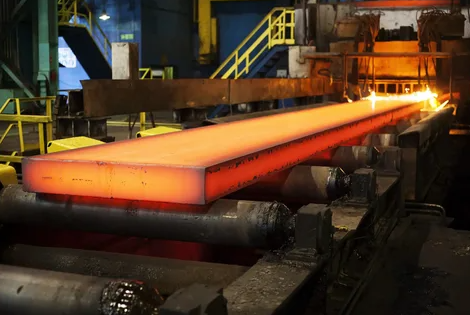European steel buyers' interest in green steel has waned following a price reversal driven by end-users needing to cut costs amid weak demand.
Investment in green steel production is increasing as the European Commission approaches its goal of making the steel industry a net-zero carbon emitter by 2050. New entrants to the market are looking to establish production in regions with an abundance of non-fossil fuel energy. This highlights the impact of renewable energy and higher electricity prices in Europe.
H2 Green Steel intends to build its plant in a new location with access to Swedish hydropower. Its potential led to the signing of a final debt financing agreement worth €4.2 billion to finance the green steel project. The company has also raised €300 million in equity capital and received a €250 million grant from the EU Innovation Fund.
Last month, MEPS reported that another startup, Hydnum Steel, plans to build the Iberian Peninsula's first green steel plant after raising more than €1.65 billion in investment. It will use local renewable energy to produce the green hydrogen needed for its DRI plant.
Steelmakers in the United Kingdom have expressed concerns about the availability of cost-effective energy as the planned switch to EAF-based production is expected to almost double electricity consumption. The UK Government has pledged financial support for the move planned by Tata Steel in Port Talbot, South Wales, and British Steel in Scunthorpe and Teesside.
The race for renewable energy
However, in March, industry body UK Steel said the UK government had missed a "great opportunity to ensure electrified, clean steel production thrives in the UK" by abandoning plans for a green energy pool. The system adopted in France, Italy and Greece aims to reduce energy costs by prioritizing cheaper renewable energy sources.
UK Steel says that over the past decade, steel producers in the country have paid electricity prices 60-80% higher than in Germany and France.
Under the European Commission's Renewable Energy Directive, the EU has increased its 2030 renewable energy target from 32% to 42.5%, potentially paving the way for lower energy costs in the long term. In Asia, Chinese authorities recently said that their non-fossil fuel energy sources, including nuclear power, now account for 50.9% of the country's total installed energy generation capacity. Despite this, coal accounted for 56.2% of China's energy consumption last year, compared with 25.9% for non-fossil fuels.
Significant investment by steel companies in the transition to more environmentally friendly forms of steel production. Ultimately, the race to reform the energy sector will likely determine how quickly green steel premiums fall and the material's appeal increases.
Falling prices in Europe reduce demand for green steel

|
|
Azovpromstal® 20 May 2024 г. 17:54 |





